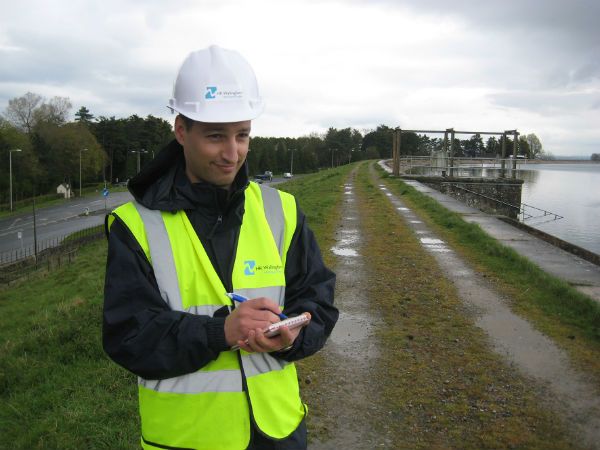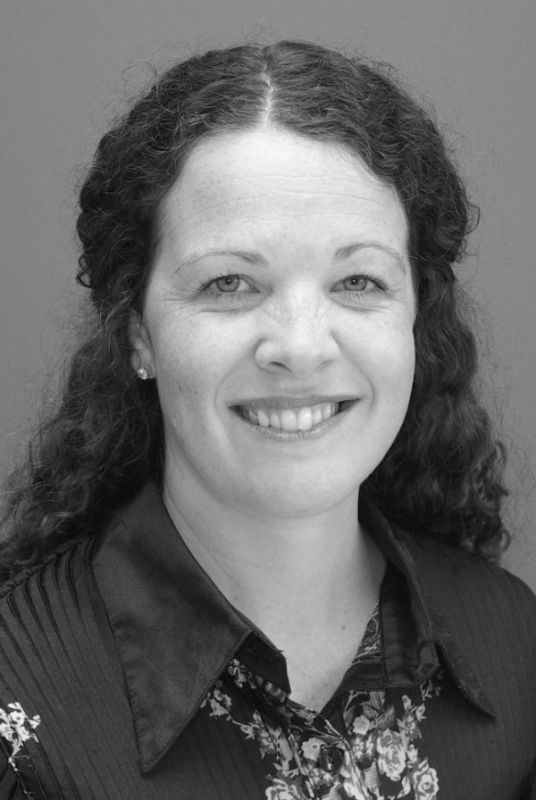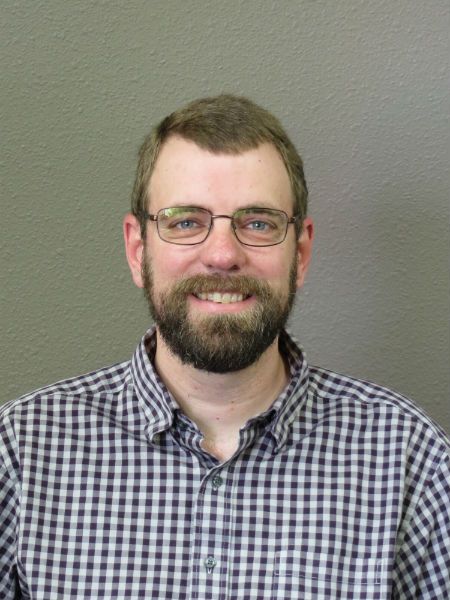The Modern Dam Engineer
Published on by Water Network Research, Official research team of The Water Network in Social
Like many industries, the dam industry is influenced by both internal and external factors which can prompt change. IWP&DC was interested in finding out if such elements have affected the engineer’s working life when inspecting dams. We asked members of the industry for their own thoughts about the role of the modern dam engineer: Has this changed in recent years? Are engineers faced with increased challenges? And will this role continue to evolve?
 Craig Goff, Principal Dams Engineer, HR Wallingford, UK
Craig Goff, Principal Dams Engineer, HR Wallingford, UK
While the role of dam engineer has definitely evolved, the fundamentals, the essentials of dam management, remain the same. Of course, we now have more advanced electronic instruments for monitoring, and thanks to this technology, huge volumes of data to analyse, compared to what was previously available to the dam engineer. So that’s definitely changed, but there is still no substitute for hands-on physical inspections, for engineers using their personal engineering judgement to assess a situation.
Some external factors have forced changes. Extreme weather events will naturally lead to more frequent examples of severe flooding. In most cases, dams are already well built to withstand these eventualities, but the incident in South Yorkshire in England in 2007, when hundreds of people were forced to evacuate their homes after out of bank flows from the spillway eroded a large hole in the downstream face of the dam at Ulley Reservoir near Rotherham, have helped to raise public awareness that dams can pose a risk to the local community. And in 2010, changes to legislation governing reservoir safety in the UK - the Reservoirs Act 1975 – moved the industry from a standards-based approach to more of a risk-based approach, prompting much debate about the definition of a ‘high-risk’ reservoir.
More positively, dams are increasingly serving more than the purpose they were originally designed for, being used for leisure facilities or adding hydropower to an existing dam for example. So, while new large dam construction projects are now rare – in the UK at least – many existing dams are being adapted and their use extended, which is helping to give them a new lease of life.
The advance of technology has helped the modern dam engineer in many ways, from minor to major. For example in a minor way, the ability to carry multiple site survey devices (e.g. camera, dictaphone, compass, notepad) in one smart phone speeds up dam inspections. In a more meaningful way, the adoption of advanced real-time infrastructure monitoring with early warning alerts, or the adoption of drones to visually inspect dangerous or difficult to access areas of dams, can be of enormous help to the dam engineer. Underpinning all of this though, I still believe that, along with the monitoring data and tools, there remains a critical role for data interpretation and visual inspection by an experienced dam engineer.
Has accountability in the role increased more over the years?
I think there is still much more to do in terms of informing the public about the important role dams play in public safety, and the British Dam Society in the UK is already doing great work in this regard. Historic dams can be beautiful structures that epitomise the definition of civil engineering – ‘harnessing the great powers of nature for the benefit of mankind’. Many dams are appreciated by the public for their contribution to the natural landscape, but unlike castles which no longer need to act as fortifications, dams must continue to fulfil their original engineering function of restraining huge volumes of water. This has led to some lengthy and costly legal battles where local communities have opposed necessary safety upgrades to dams on the grounds that the visual amenity is being harmed, even though without them, residents living downstream would be left at risk if the changes were not implemented. Butterley Reservoir, a listed structure in Derbyshire, is a good example of this.
What has been the impact of retiring engineers and generational knowledge transfer?
This is something we do need to be concerned about. As part of a working group sanctioned by the Institution of Civil Engineers’ Reservoirs Committee to investigate ‘Inspecting Engineer Succession Planning’, Inspecting Engineer Panel members were surveyed on their plans for retirement, and Supervising Panel Engineers surveyed on their plans for progression to Inspecting Engineer Panels. The results of the surveys are, unfortunately, not surprising. We have found that there is a predictable decline in the numbers of Inspecting Engineers which we expect to be down by 50% by 2022, to between 21 and 30 in the most optimistic scenario. (The results of the full survey are due for publication in the British Dam Society’s official journal ‘Dams and Reservoirs’ in 2018.) This means we need to look at whether the replacement of new appointees is likely to be sufficient to maintain adequate Inspecting Engineer resources in the future.
There are many suggested causes for the predicted decline in senior dam engineers in the UK, including perception in the industry that the required experience demanded is no longer achievable due to the type of project roles typically available to aspiring engineers in a more globalised and consolidated civil engineering market. One of the recommendations following the panel engineer surveys is that a formal mentoring programme be established for Supervising Panel Engineers to nurture and encourage them towards the most senior All Reservoirs Panel.
Despite these issues, there is a bright future ahead for the role of the dam engineer in the UK. We have the opportunity to embrace exciting new technologies, to learn ever more about the behaviour of our dam structures, and to better manage and interpret the large volume of monitoring data now possible. We need to strike the right balance between preserving our historic and beautiful dams while respecting their function, and ensuring they continue to serve, and not endanger the communities they were built to help.
Craig Goff has been involved with the management of dams and reservoirs for over 15 years, working initially with Halcrow Groups’ Dams and Irrigation Team, and today as Principal Dams Engineer at HR Wallingford. Craig was the lead author of the Environment Agency’s 2009 ‘Owners Guide to Reservoir Safety’ and is an active Supervising Panel Engineer working with all types of reservoir owner. Earlier this year, Craig became the lead author on a new Dam Safety Handbook produced for Welsh Water.
 Andy Hughes, Director of Dam Engineering, Atkins
Andy Hughes, Director of Dam Engineering, Atkins
I have been formally examining reservoirs as a Supervising Engineer for 30 years and inspecting reservoirs for more than 26 years. In terms of the overall role, where the Inspecting Engineer is concerned this clearly hasn’t changed over time but what could be argued has changed is the type, amount and quality of information. Owners have in general got better in obtaining information but on the other hand in the last 30 years there have been times, as organisations have gone through change with reductions in manpower and outsourcing of things such as surveys, where information has been impacted in a negative way.
Maintenance within the water companies seemed to decrease in quality in the later part of the last century as manpower reductions and outsourcing occurred but this has improved, reinforced by elements of maintenance now being enforceable with legislation.
Certainly, the enforcement role of the regulator has improved which has aided the Inspecting Engineer in many ways including the keeping of records, and assisting in getting owners to be compliant.
We have gone through a period of legislation change with a move towards adopting a risk based approach and we now have in effect three different forms of legislation in England, Wales and Scotland, with a fourth coming in Ireland. Interesting times but I can’t help but feel we have missed a great opportunity to improve and perhaps simplify legislation.
With more and more development downstream and advances in dam break analysis, we are seeing more re-categorisation of dams with regard to consequence of failure and resurgence in spillway enlargement and enhancement works.
Rationalisation of smaller treatment works into larger works supplied from regional resources and ‘ring mains’ has led to many of the smaller reservoirs being declared redundant and surplus to requirements. This has led to a number of owners having to consider how to reduce their liabilities and hence, in my opinion, we will see an increasing number of schemes to discontinue reservoirs in the future.
Innovation in the fields of leakage detection, in drones and advances in remote monitoring have been useful additions to the dam engineers’ toolbox but nothing can replace the trained reservoir keeper who walks round the dam at frequent intervals. Many companies provide City and Guilds training courses for their operators as part of their licence to operate policy.
Since joining the All Reservoirs Panel more than 26 years ago, the number of All Reservoirs Panel Engineers has reduced from 100 to 32, and the Supervising Engineers Panel from 480 members down to about 120 – a worrying trend. Training is often the first thing to be cut when finances are stretched but we are not doing enough to provide for knowledge transfer and succession planning as significant numbers of the baby boomer era retire.
Unfortunately, many of those preparing for Panel Membership have not had the opportunities and training which many of my generation had and I feel that some of the judgement calls and pragmatism, which come from the older members of the Panels, will not come in the future. There will be more people being very procedural and asking for calculations to base their decisions upon – a worrying prospect.
My own personal observations are that:
- I believe succession planning and knowledge transfer is going to be our biggest problem as the consultants currently doing reservoir work are swallowed by American and Canadian firms. This problem is likely to get worse because their firms are generally risk adverse.
- I believe there is a lack of understanding in employers between the demands and attitudes and behaviours of the baby boomer era compared with General X, Generation Y and the Millenniums .
- I believe there is a huge problem with the status of engineers in society which limits our abilities to be respected for what we do and be rewarded properly as a result.
- I believe the recent requirement of the ICE to have as a minimum Incorporated Engineer status before one can become a Supervising Engineer is a retrograde step which will limit the number of appointments at a time when the numbers on the panels are reducing.
- I believe there is a trend to more and more prescriptive ‘rules’ associated with dams, which coupled with the difference in generations, is creating or will create a situation where people do not think!
- I believe many of our procurement rules and methods and frameworks are counterproductive with respect to reservoir safety.
- I believe we are not training our young engineers properly in the fundamental basics of civil engineering and dam engineering. Many want to be ‘project managers’ and lack basic skills.
Andy Hughes is responsible for the Atkins business in Dams and Water Resources. His experience includes being Resident Engineer on the Symvoulos Dam in Cyprus from 1989-1992 while he is currently overseeing a number of hydro projects, including the installation of hydro power plant at Grimwith Reservoir in Yorkshire and at a t a dam in the Lake District, plus the refurbishment of a hydro power plant and dam in Sri Lanka. Previous Chairman of the British Dam Society on two occasions and Vice President of ICOLD, Hughes sits on the ICOLD committee on Dam Safety, teaches at a number of venues and has acted as an expert witness in a number of court cases.
 Ye Jianqun, Vice Chief Engineer, PowerChina Huadong
Ye Jianqun, Vice Chief Engineer, PowerChina Huadong
Over the past 20 years we have been seeing a growing need for constant change and improvement regarding the role of the dam engineer in China. Specifically, the lifelong responsibility has focused on the function and safety of the project. That means the dam engineer takes the responsibility of the project in its full lifetime cycle and will work through all phases of the development of a hydropower project: feasibility study, project proposal, basic design, monitoring and quality control, detailed design during construction, operation and maintenance, and even decommissioning of the project.
With revised Chinese standards and regulations, and following Chinese contractors’ overseas business development in the hydropower sector, the Chinese dam engineer’s role is growing with visions to be better at all-around services both in domestic and international markets.
Nowadays, in order to fulfil requirements for sustainable development, technical solutions have to take into consideration the social and environmental impact of the project, which certainly added to the engineers’ scope of work, such as resettlement, fish ladders, ship locks, better livelihood of local people. Examples of this include the fish ladder in Shaping 2 Hydropower Project in China; Sesan 2 Hydropower Project in Cambodia; the world’s largest ship lift in the Three Gorges Project; and the significant cost increase of resettlement, up to 50% of the total investment of the Baihetan hydropower project in China.
To meet these challenges and higher standards, more advanced technology has been utilised in the daily work of a dam engineer, such as 3D design and information technology, which is more efficient, more considerate with less mistakes. However, there are side effects of using such advanced technologies. One skilful engineer may become less committed to conclusive suggestions possibly due to lack of engineering experiences. Thus there are needs for senior or retiring engineers to guide the young engineers, and to promote knowledge transfer between generations, such as building up a database of case studies, and things such as a tutorial system that facilitates the retiring engineer’s teaching and the young engineer’s learning.
Over the past 20 years, there has been enormous innovation and development in information, construction equipment and materials such as the application of the roller-compacted concrete dam characterized with lower cement content, less heat and faster construction. With new technology and continuous development, a dam engineer will certainly continue to be an important evolving role.
Ye Jianqun’s experience includes working as Project Manager on the 1800MW Longkaikou Hydropower Project in Yunnan Province, China, the 348MW Shaping 2 Hydropower Project in Sichuan Province, China, and the 400MW Sesan 2 Hydropower Project in Cambodia.
 Marius Jonker, Specialist Dams Engineer, Entura, Australia
Marius Jonker, Specialist Dams Engineer, Entura, Australia
Although dam safety has always been a critical goal for the dam engineer, modern dam safety programmes really came into effect in the 1970s, particularly after the catastrophic failure of Teton Dam in 1976 in the US state of Idaho. In the ’70s and ’80s the role of the dam safety engineer evolved as countries enacted dam safety legislation and developed regulations and procedures for conducting dam safety inspections.
Since then, we’ve seen further development in dam safety management and ongoing changes to the role and qualifications of the dam engineer undertaking safety and surveillance activities. These changes mainly relate to the following factors:
Enhancement in dam engineering technology:
In the last 20 years, defensive measures to ensure the safety of dams have improved, such as filters for internal erosion protection, and corrosion protection in ground anchors. Modern materials and technology have enabled faster and more economical construction, such as the use of roller-compacted concrete and high-technology construction plant.
Methods for analysing dams have also become more sophisticated with increased computing power and more advanced analysis software, in particular for extreme floods and non-linear analysis for seismic loading. It is no longer acceptable for a dam safety engineer to rely only on visual inspection and monitoring data. Modern dam engineers need to understand the underlying design philosophy and keep up with the latest construction practices and their impacts on dam behaviour. We also need to maintain an enhanced understanding of the performance of dam structures and appurtenance structures under various load conditions.
Better understanding of failure modes and risk: Dam safety risk assessments have become standard practice over the past two decades as we’ve increased our understanding of risk. Risk assessment now defines the dam surveillance scope and programme. In particular, the last 20 years have seen significant developments in analysis of failure modes and effects. Failure modes analysis, although initially used in risk assessments and the design of new dams and dam upgrades, is now the foundation of a risk-based dam safety and surveillance programme.
When assessing failure modes, the dam engineer needs to work alongside geologists and construction engineers to understand the impact of construction and to identify features that are not readily visible through visual inspections but could affect the safety of a dam, such as the foundation conditions that contributed to the spillway erosion at Orroville Dam in the US in 2016.
Improved monitoring technology:
The modern dam engineer has access to contemporary geotechnical and structural monitoring instruments, which are useful for interpreting the behaviour of a dam. In recent years, electric instruments and automated data acquisition systems have enabled real-time monitoring of dams and near-continuous time history records for the dam engineer to evaluate. However, the collection, organisation, interpretation and presentation of such data can be a time-consuming challenge for dam owners and dam engineers. Often such data is stored in multiple locations and formats, or different types and models of instruments are used with varying methods of collecting data. Also, the software used to collect and process the data may not be compatible.
However, some technological advances do hold promise for streamlining the collection and storage of data, and are supporting the modern dam engineer to quickly identify issues or anomalies. A number of data management systems are able to operate on mobile devices and allow for manually read and automated data to be synchronised into a single data management platform that can produce notification alarms, reports and charts. Some of these systems also allow uploading of field notes and photos.
Environmental factors:
For dam engineers, consideration of environmental factors is nothing new. However, the potential for changes in weather patterns, and the consequences of these changes, are increasingly important concerns for the modern dam engineer, such as considering changes in the size and frequency of rare flood events when evaluating the required spillway capacity, or investigating the adverse impact on embankment dams during long periods of low rainfall, which could cause desiccation and cracking of the clay material.
Economic factors:
Some large dams are now more than 50 years old and are in disrepair or inadequately monitored. However, the limited budgets of public and private sector dam owners can constrain their ability to fund comprehensive surveillance programmes and dam remediation works. This places increasing pressure on the modern dam safety engineer, who should recommend a prioritised programme of risk-reduction work within the context of the owner’s financial constraints, to ensure that risks are adequately managed.
Community awareness:
Dam engineers are increasingly required to consider the safety of dams in the context of the community’s cultural and heritage interests. Community scrutiny of the safety of a dam, or of planned works to improve safety, continues to increase. With the advent of social media, public scrutiny is now immediate, constant and global. This is a challenge for modern dam engineers, who are not often trained in community engagement.
Safety:
Over the past two decades, workplace health and safety requirements have had a significant impact on dam engineering. Although not a new responsibility, the regulatory requirements to ensure safe construction, operation, maintenance and decommissioning have increased, requiring modern dam engineers to be aware of legal requirements and safety standards beyond their core skills.
Generational change:
Ten to twenty years ago many dam engineering organisations experienced the ‘bathtub’ effect in the age distribution of their workforce, with a general shortage in the 10–20-year experience bracket. As the workforce ages, engineers with 20+ years’ experience are moving towards retirement, taking with them the knowledge of the generation who designed and constructed the dams that are now more than 50 years old and may still retain original technology. The modern dam engineer therefore faces a dual challenge: not only to stay up to date with the latest technology, but also to maintain an understanding of older equipment and instruments.
With twenty-seven years of experience in dam engineering and related fields, Marius Jonker, is very familiar with all aspects of dam projects, including planning and feasibility studies; design of new, upgraded and modified dams; construction phase services; decommissioning studies; as well as dam safety projects including dam safety portfolio management, full safety reviews, individual dam and portfolio risk assessments, safety inspections, monitoring, surveillance, operation, maintenance, and dam safety emergency planning.
 Rebecca Knott, Tim Logan and Dan Forster, Dam Safety Intelligence, New Zealand.
Rebecca Knott, Tim Logan and Dan Forster, Dam Safety Intelligence, New Zealand.
Twenty plus years ago when we started work as dam engineers, email was just starting to be used but certainly not in earnest. Our recently acquired mobile phones had a flip cover, no text message facility and certainly no camera or internet connectivity. Coverage was spotty at best and certainly didn’t include most dam locations. A memorable first visit to a dam site was not proceeded by any health and safety training, and safety accessories extended only to boots and hi-vis. As the graduate engineer, you just took a deep breath and followed the more experienced engineers over the edge onto the rusty ladder and down into the shaft, with no harness or gas detector. You ‘d be told: “It has always smelled like this, don’t worry”. The most valuable person in the office was the one who knew off-by-heart every instrument name, location and what it responded to. The visual inspection records were hard copy photos printed from film and pasted into albums (often now found with photos unstuck and randomly distributed in the filing cabinet).
In some ways we have come a long way since those days – and in some ways the core elements of dam safety inspections have not changed at all.
Irreplaceable dam surveillance “eyes”
Albeit that there have been significant advances in technology, we are not yet at the stage where automated monitoring is so prevalent and all-encompassing that dam safety can be purely a ‘remote’ operation. The key component of dam safety assurance remains regular inspection by operators, field technicians and engineers who are trained, competent, experienced and who understand the dam’s characteristic behaviour, potential failure modes and their indicators. Most developing dam safety incidents are still identified by someone familiar with normal performance visually identifying a change. The dam inspector can “fill in the gaps” between the discretely located instruments, and use their senses and judgement to identify changes in a way that instruments cannot – at least not yet.
Benefits of technology
Developments over the past 20 years have opened up an array of new techniques that we can use to improve our dam surveillance. Fibre optic distributed temperature sensing for seepage monitoring – especially for very long distances – is a powerful tool. Site inspectors can convey their on-site observations to technical support staff miles away using the digital cameras and videos found on most phones – and there’s nothing like a video to illustrate seeps and sand boils. Faster computers, inexpensive file storage and online sharing, as well as interactive interfaces, allow information about a dam to be presented in an intuitive way to a wide audience– so gone are the days of needing the encyclopaedic memory. This is a real bonus for technical teams working on issues – it can be less helpful if it’s in the public domain and incorrect information is spreading exponentially during incidents. A key task for dam owner public relations teams has become monitoring social media and knowing when to step in to correct information, and how to best use it to inform and engage the community.
Satellite imagery, LIDAR, 3D scanning for deformation monitoring, bathymetry for reservoir and canal invert surveys, drone inspections of spillways and penstocks (less slips and twisted ankles!), down-hole and underwater cameras – technology allows us to gather large amounts of data and inspect areas previously inaccessible. The challenge is how to ensure that all this data has a purpose. Before racing out to use the latest available technology it is wise to ask:
- What question does it answer?
- How will it be presented and analysed so that dam safety conclusions can be drawn in a timely manner?
- Is it properly installed and calibrated so that we can trust the data?
- Who has the experience to interpret it?
After all, it is possible to drown in data.
In the New Zealand context, tight control on expenditure by dam owners has so far limited the replacement of manually read instruments with remote/telemetered monitoring – except where dam safety issues have been identified. As such, most large dams in NZ do not have fully automated/remotely read instrumentation. We anticipate that there will be a progressive shift, with monitoring of key performance parameters associated with potential failure modes being the first automated, along with locations where new technology can be applied or maintenance of ageing instrumentation warrants automation upgrade. This progression will have the additional benefit of freeing up the all-important dam inspector to focus principally on their visual observation skills, rather than running tens of metres of tape down observation wells.
Improvements in health and safety
Improvements in technology have led to health and safety improvements by eliminating the need for a person to enter an unsafe environment – illustrated by drone inspections above. Installation of remotely read transducers can eliminate the need to access confined spaces to measure gauges or seepage. Gas detectors allow us to understand the environment we are entering or working in, without ‘guess work’ about the atmosphere. Safe work at heights equipment takes the ‘edge off’ trusting those old ladders – and significantly improved standards for health and safety in the workplace and legislative responsibilities on all actors in a workplace have led to release of funds to replace some unsatisfactory access systems altogether.
The training, paper work and process associated with modern workplace health and safety requirements can seem to be out of proportion to the amount of time spent actually undertaking the work – but compared to our first experiences on dam sites, we’d take that any day. Especially now that we are responsible for the lives of others undertaking the work.
Ageing dams and ageing workforce
Recruiting for Principal Dam Engineers is a tough job. Even with broad international advertising, it is hard to find people with solid dams experience. Conversations in international fora reinforce a scarcity of experienced dam engineers. In developed countries, the trend away from large dam construction has resulted in experience being gained only through remedial works or perhaps irrigation related storage works. Loss of some IP as the “dam builder generation” retire is inevitable, but can be offset by new thinking and ways of preserving and presenting the observations and interpretations of those who’ve gone before. With an increasingly mobile workforce, it is important to develop systems for IP transfer. With young engineers willing to travel, experience of dam construction from offshore will make them a very valuable asset back in environments where we have ageing assets to maintain. Successful application of new technologies will also capture the imagination of the next generation. And the benefits that our existing dams bring – hydroelectricity, flood protection, irrigation, water supply, water treatment, wildlife habitat, mean there will be a job for dam engineers for the foreseeable future.
Rebecca Knott, General Manager/Principal Engineer; Tim Logan, Principal Dam Safety Analyst; and Dan Forster, Principal Dam Safety Engineer with Dam Safety Intelligence in New Zealand - a dedicated group of engineers, scientists and geologists focused on the safe management of dams and other water infrastructure, based in Wellington New Zealand. They have 70+ years of dams experience between them. www.damsafety.co.nz
 Rachel Pether, Project Director for Dams and Reservoirs, Black & Veatch, UK
Rachel Pether, Project Director for Dams and Reservoirs, Black & Veatch, UK
The recent revisions to reservoir safety legislation in the UK have brought about many changes, but not, in my opinion, significantly changed the role of the engineer when carrying out inspections. What has become more apparent is a general shift from relying entirely on an individual All Reservoir Panel Engineer’s (ARPE) judgment, to a more prescriptive guidance based approach. However in general, the system of periodic inspections and safety review by the ARPE has remained unchanged over the past twenty years.
I don’t believe that climate change has not led to direct change in the methodology for calculation of flood events at large raised reservoirs. However, it may be having an indirect effect, as rainfall data continues to be collected and utilised for the prediction of future extreme rainfall events. Economics is always a factor, and to some extent the trend towards using more established guidance based approaches will assist dam owners in planning a programme of works to address safety concerns that have been identified within the industry.
Modern dam engineers can access a myriad of technologies to assist in their roles, which were not available until relatively recently, and the opportunities in this area continue to expand. This includes dam engineering specific technologies, such as temperature sensors to detect and quantify seepage, but also generic developments that can be utilised by dam engineers, for example hand held devices that allow dam owners to access and edit information whilst out on site, and relay this information instantaneously to control centres for storage and analysis. At the core of reservoir safety in the UK however, is a simple but effective system of regular visual observations by qualified Supervising Engineers, backed up by inspections by ARPEs. In my opinion therefore, dam engineers have the best of both worlds in terms of utilising new technologies whilst continuing to use the tried and tested traditional methods.
Do I think that accountability in the role increased more over the years? Certainly there is a greater public awareness of risks, and this is something that both dam owners and engineers need to respond to. The modern dam engineer is expected to be an expert in stakeholder engagement and consultation as well as dam engineering. Working within a large engineering consultancy however, I am not aware that our dam engineers feel this is a particular ‘burden’. We are of course, extremely aware that our first responsibility is to those living downstream of the dams that we design, inspect, or supervise.
Having served on the Institution of Civil Engineers’ Reservoirs Committee for the past eighteen months, I have been greatly encouraged by the standard of applicants to the reservoir panels. It is clear to me that both the large reservoir owners and engineering consultancies are investing a great deal of time and effort into training up the next generation of dam engineers. I have also benefitted in my own professional development, by the generous way in which reservoir owners and panel engineers share their knowledge and experience when allowing trainees to attend annual visits and ARPE inspections. I believe the openness with which this is conducted is a credit to our industry. In my role at Black & Veatch I have been heavily involved with our own succession plans, and I am confident that the technical expertise that we have developed over the years is being passed on effectively.
Inevitably, dam engineering will continue to evolve, and therefore the role of the dam engineer will also do so. The full impact of the recent changes in reservoir legislation in the UK has not yet become apparent, and it is certain that this will shape the role of dam engineers in the future. New guidance continues to become available and increasingly it is expected that these standard methodologies are followed, rather than dam engineers relying entirely on their own engineering judgment. In addition, I would expect the pace of technological advances will continue to accelerate, and dam engineers will need to embrace innovation, whilst still maintaining the high level of reservoir safety that has thankfully become the accepted norm in this country.
Rachel Pether is Project Director for Black & Veatch’s UK based Dams and Reservoirs team and an active Supervising Engineer appointed to the panels for both England and Wales, and Scotland. She is experienced in dam appraisals, design and construction. Rachel is a member of the ICE Reservoirs Committee, the Chair of the British Dam Society’s (BDS) Knowledge Working Group, and also Chair of the Editorial Panel of the BDS Dams and Reservoirs Journal.
 Anton Schleiss, President of the International Commission on Large Dams
Anton Schleiss, President of the International Commission on Large Dams
I think the role of the dam surveillance engineer has changed considerably in relation to the monitoring equipment we use today. Engineers have to handle complex and big data from lots of different modules, such as automated and remote monitoring, which is obtained at regular intervals and sent directly to a computer. Ultimately the development of such equipment had led to the digitalised treatment of data and it is important that dam engineers can competently analyse the quality data obtained. They need to interpret this data accurately and quickly to determine if the dam is working as well as it should be.
In the past the dam engineer just had to read instruments, write down numbers in a notebook when at the dam site, and then a more experienced engineer (maybe one involved in the actual dam design) would take a look. But there was always the potential for errors to occur here when transferring data to someone else to interpret.
Today’s engineers have to handle much more data, sometimes obtained at increasingly regular intervals. They have knowledge on dam design, data handling, equipment, remote sensing, computers and surveillance etc. Things have also changed as in past, especially with high dams, it was difficult to follow up any development of cracks at the dam’s downstream face. Today we can use drones to obtain fast and precise pictures to help trace dam behaviour in detail. Today’s engineer has to embrace a greater variety of competencies. Those who carry out monitoring also have to be able to make the first analysis of this data.
I do not think that generational knowledge transfer is a problem as more often than not young engineers will be working with a more experienced engineer to ensure continuity. One advantage that younger engineers do have is that they are much more knowledgeable about how to handle ‘big data’. They’re not afraid of it and don’t see it as a problem. This is one positive way the role of the modern dam engineer has evolved.
However, in some developing countries perhaps engineers can feel a little flooded by the volume of data. They need to have the ability to be able to sort this data to get good information from it. For example, in Switzerland every year a dam engineer responsible for the dam has to present reports on how the dam is behaving based on the readings done by the dam engineer. Switzerland has recently collaborated with China to carry out training for this in the framework of Swiss-Chines cooperation in the domain of dam safety (Dam Safety Enhancement Programme). China has so many dams with many measurements but sometimes not always the procedures required to carry out regular assessment reports to monitor dam behaviour. So the involved Swiss experts on dam safety have shown them how it is done in Switzerland and shared their experiences and expertise. These procedures are very important to ensure that engineers are not overwhelmed by data.
I think this also illustrates how international exchange is very important; everyone can learn from it. If a certain critical situation arises it will give some new indication of monitoring that needs to be done or other priorities and scenarios.
Certain external factors have definitely influenced the role of dam engineers. Climate change has influenced how we work due to the fact that it has become more important in relation to what happens in the vicinity of the dam. With Alpine reservoirs climate change means that there could be greater risk of sliding and instability of slopes which were not really such a great concern in the past. There could also be greater problems associated with flooding and debris and sediment in many reservoirs worldwide.
As public awareness has increased in many countries the rules concerning dam safety have become more known and there is an increased awareness of how dams should be monitored to guarantee safety. For example ICOLD has working groups and publishes technical bulletins to show how monitoring should be done.
Anton Schleiss was the Head of the Hydraulic Structures Section in the Hydropower Department at Electrowatt Engineering, and was involved in the design of many hydropower projects around the world as an expert on hydraulic engineering and underground waterways. In 1997 he was nominated full professor and became Director of the Laboratory of Hydraulic Constructions in the Civil Engineering Department of the Swiss Federal Institute of Technology Lausanne. Former chairman of the Swiss Committee of Dams and of the Swiss Committee of Flood Protection, he formerly served as vice-president of ICOLD and was elected president in 2015.
 Craig Scott , Africa/Europe Dam and Hydropower sector leader, MWH, now part of Stantec.
Craig Scott , Africa/Europe Dam and Hydropower sector leader, MWH, now part of Stantec.
I don’t think the role of the dam engineer has changed significantly over the past 20 years or so. Many owner organisations still prioritise dam safety, and the fundamentals of dam safety have not really changed. Privatisation of government dam entities, and the private development of many dam structures has led to more ‘internal’ owner dam safety work. I have seen a move away from very formalised SEED type inspection processes to more reliance on individual and more experienced dam safety experts.
The development of national standards or legalisation has been the biggest driver of change I have seen. As countries have enhanced their own dam safety legislation, enhanced environmental legislation, and become party to global environmental treaties, each has developed its own unique approach to grapple with technical, environmental and social aspects of dam related infrastructure. Structures for irrigation, water supply, and flood protection are increasing with a lesser influence of hydropower related dams. The recent draft ICOLD bulletin on Multipurpose Water Reservoirs summarises these issues succinctly.
Like all industries there have been significant advances in technology which provide greater data and means of analysis as it relates to safety. Technology has advanced inspections in fields such as non-intrusive investigation, through to advanced means of analysis such as finite element analysis, and chemical analysis seepage water etc. The downside I believe is that the reliance on technology has not assisted up and coming dam engineers with a holistic understanding of dams, their geology, and environment. Some tasks which used to form core parts of core learnings are now automated with little knowledge enhancement passed on.
The consequences of dam failure can be serious and whilst this has not fundamentally changed, the public acceptance of risk I believe has reduced as the benefits of dams has become more normalised and sometimes forgotten. This issue affects many industries. Related industries such as ‘insurance’ for cover of owners and advisors has changed and tightened leading to greater costs, and also a greater reliance on expertise as a form of mitigation to ensure dam safety compliance.
As dam infrastructure is developed by the private sector, as companies aim to reduce costs, as fewer dams are built by fewer companies, there is fundamentally fewer opportunities for younger engineers to learn holistically about dams in the countries I have worked in. The modern non-nationalistic approach to dam building by developing them via EPC or private finance has reduced opportunities for some nationalities, whilst shifting the positive opportunities to other countries’ young engineers. Humans are also living many years longer and this has had the advantage that existing knowledge is available to transfer for longer periods, with the downside being that experienced dam engineers are working longer and themselves acting as a barrier to development of the next generation – a catch 22 situation.
Modern engineers need to have a wide understanding of engineering coupled with environmental and social understanding, and this marriage of understanding I foresee can only grow and evolve. I see the centre of excellence of dam engineering shifting throughout the globe as individual country needs for dam engineers evolves from development, through to ageing structures and decommissioning. Social pressures will make development or modification to dam structures harder, with the upside being that the public acceptance for well-engineered structures can only increase.
Craig Scott has been a practising consultant dam engineer for 25 years. He has worked in Asia, the Pacific, Europe and Africa.

 Sharon Tapia and Erik Malvick, California Division of Safety of Dams, US
Sharon Tapia and Erik Malvick, California Division of Safety of Dams, US
As a result of the Lake Oroville spillways incident in February 2017, dam safety regulations in California were strengthened by the State Legislature and Governor to require flood inundation maps and Emergency Action Plans for all dams except those with a low downstream hazard classification. In addition, the Governor ordered comprehensive re-evaluations of dam appurtenances, such as spillways, to bolster dam safety across the State.
Significant regulatory advances and increases in funding often occur following major incidents or systematic failures, which makes the role of the modern dam engineer so crucial, to assist dam owners in fulfilling their legal responsibilities while protecting their investments and ensuring the safety of downstream residents.
California’s Dam Safety Programme began in 1929 with the regulation of on-stream dams after the failure of the St. Francis Dam in 1928. Decades later, off-stream dams came under regulation after the failure of the Baldwin Hills Dam in 1963. Today, the programme has regulatory responsibility for nearly 1250 dams statewide ranging in height from six feet to 770 feet tall and storing up to 3.5 million acre-feet of water.
In California, more than 70% of the dams are over 50 years old, and in many cases the original design loading conditions have been exceeded as the state-of-practice evolves in structural, hydrologic, hydraulic, geotechnical, and earthquake engineering. In many cases, deficiencies associated with ageing infrastructure are directly related to the standards of practice used in design and construction during the era that the dam was built. In the 21st century, California is in an era of dam restoration characterised by significant rehabilitation projects that are bringing them and their appurtenances up to modern day design standards.
Lessons learned from interim findings, reported in a memorandum from the Oroville Independent Forensic Team (IFT), have identified principles of practices that will continue to change the regulation of dam safety in California and are expected to have widespread impacts nationally and internationally. To date, three lessons learned related to physical factors have emerged from the Oroville IFT with respect to dam safety:
- (1) physical inspections are not sufficient to identify risk and manage safety.
- (2) comprehensive reviews of the original design and construction taking into account current standards of practice are necessary.
- (3) owners must recognize that meeting regulatory requirements is insufficient for managing the public and owner’s risk.
Regular visual inspections and maintenance activities performed on dams and their appurtenant structures are necessary for long-term performance of the system. However, inspections are generally limited to what is visually observable, and they are not sufficient as a standalone means to identify major deficiencies. The modern dam engineer must recognise when monitoring of a known condition is no longer prudent and a repair must be initiated or when repetitive maintenance repairs are signalling an underlying deficiency that requires a major repair. It is the responsibility of the dam engineer to recognise when comprehensive re-evaluations of the dam and its appurtenant structures are needed, ensuring the safe performance of the system and considering the risk posed by the dam or structure on public safety.
Given the limited resource constraints faced by most dam owners, the modern dam engineer should be identifying problems of highest priority and providing solutions that adequately address dam safety concerns, perhaps even more stringently than the minimum requirements imposed by the regulator. Solutions that incorporate operational flexibility and redundancies into dam designs are most beneficial and provide the dam owner with alternatives to limit downstream consequences when faced with spillway releases during flood events or drawdown of the reservoir during an emergency.
Given the owner’s legal responsibility, having a well-maintained dam that meets modern-day standards becomes even more important, not just for dam safety, but also to gain public trust in this era that relies heavily on the use of social media as a means of disseminating information that may or may not be accurate. Ideally, the modern dam engineer has the role of meeting the regulatory requirements, while meeting the needs of the dam owner, to achieve a tolerable level of risk considering public safety and to contribute to the overall advancement of dam safety.
The role of the dam engineer today is much more than a dam inspector. It is a role that considers all risks to the dam and its system and proposes solutions to the challenges faced by many dam owners. Dam owners rely on their engineers to consider future demands, like climate change, environmental factors, or public expectations, that are placed on the operation of reservoirs, dams, and their appurtenant structures—such as spillways and low-level outlets. With the regulatory impact that the Lake Oroville spillways incident is now having on the dam safety industry, the role of the dam engineer has never been more critical. Just as other historical incidents and systemic failures created lasting and positive change, the events of 2017 should encourage dam engineers to see this as an opportunity to show the nation and the world the valuable services they provide.
Sharon K. Tapia is the Chief of the California Division of Safety of Dams with 25 years of experience in dam safety. Her experience includes extensive design reviews related to the enlargement, repair, and alteration of existing dams as well as new dam construction. Sharon is the State Representative for the Association of State Dam Safety Officials and a member of the National Dam Safety Review Board.
Erik J. Malvick is the Design Technical Specialist for the California Division of Safety of Dams with 12 years of experience in dam safety. His experience has included oversight of dam designs, re-evaluation, and construction projects. Erik’s expertise is in geotechnical engineering where he has written multiple papers related to dam safety and earthquake engineering.
Attached link
http://www.waterpowermagazine.com/features/featurethe-modern-dam-engineer-6057027/Media
Taxonomy
- Water
- Environment
- River Engineering
- Infrastructure
- Civil Engineering
- Water Control
- Dams
- Hydraulic Structures